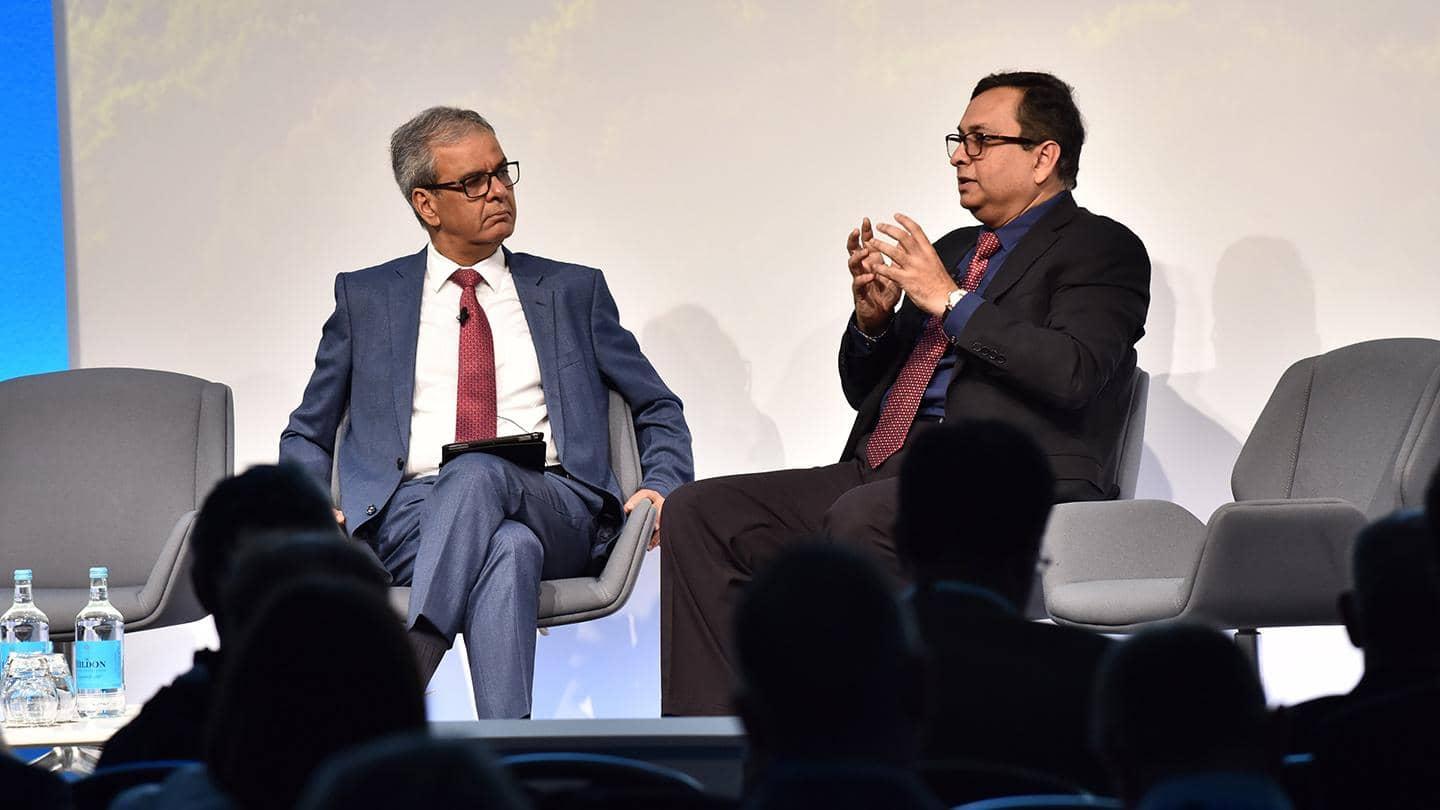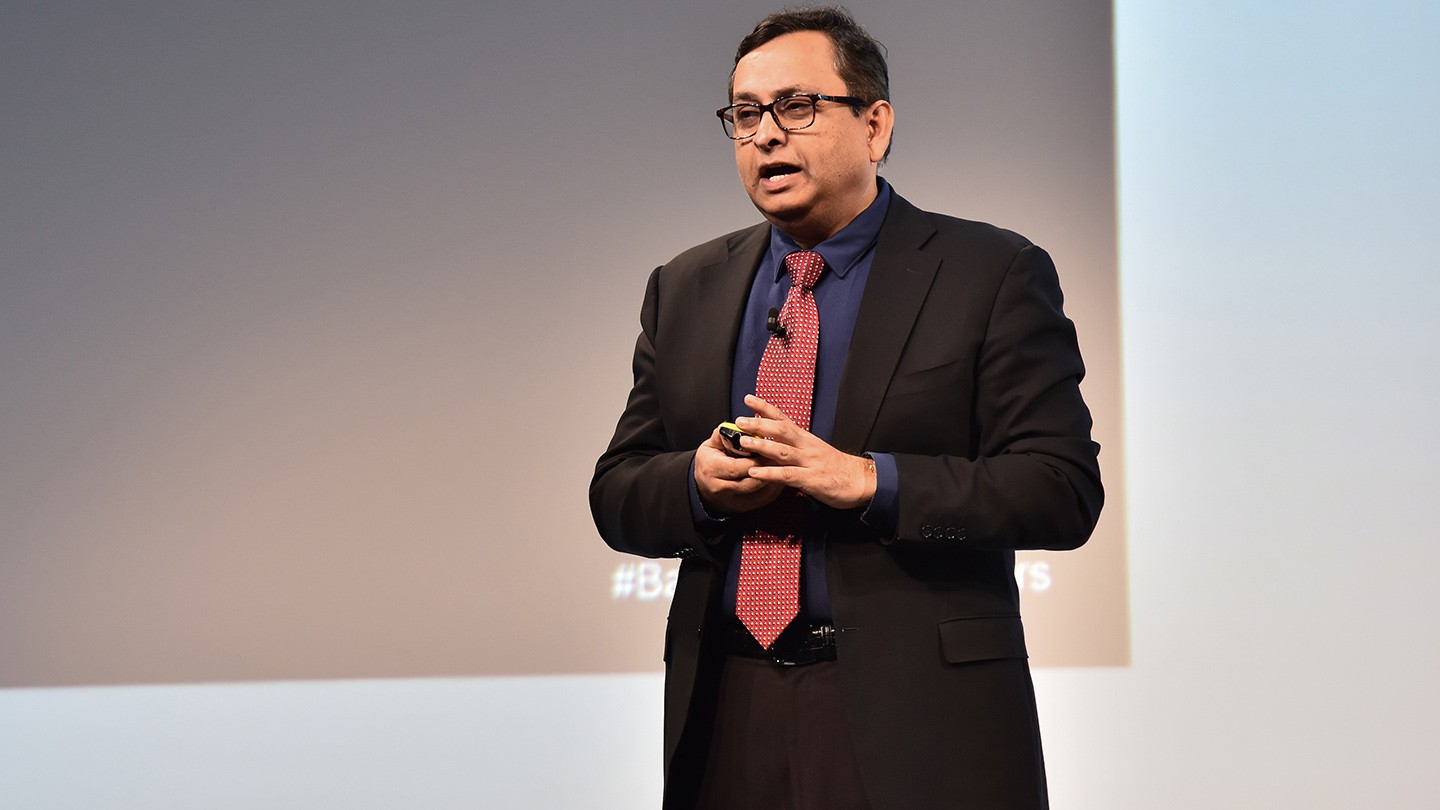
Innovation
Realising the potential of AI
Manoj Saxena is the Executive Chairman of augmented intelligence software specialists, CognitiveScale, and was a keynote speaker at Barclays’ 2018 New Frontiers event in London. He shares his thoughts on the incredible opportunities and challenges posed by artificial intelligence.
Artificial intelligence (AI) has been around for roughly 75 years, but recently, we’ve seen its true potential being realised, and that’s primarily driven by innovations in cloud, mobile and machine learning technologies, and an explosion in data.
The triumphant appearance of IBM’s Watson on the US quiz show Jeopardy! brought AI into the mainstream. I was fortunate enough to be a part of the founding team of Watson, and as its first General Manager I got to experience and shape this paradigm shift first-hand.
But why use AI, other than to conquer hit quiz shows? For me, AI is a tool with vast potential for improving the human condition and creativity. AI today is vastly misunderstood and is seen as a technology that will either kill me or will take my job away. While AI will dislocate jobs, if you do it right, the potential to do good with AI is massive.
AI as augmented intelligence
Broadly speaking, AI is a collective term for computer systems and technologies that can sense their environment by processing multi-structured data, derive insights to take action and learn continuously to get better and cheaper with time. Forms of AI in use today include:
- Automated intelligence: automation of manual/cognitive and routine/non-routine tasks using robotic process automation.
- Augmented intelligence: helping people make better decisions by pairing humans and machines to perform complex tasks or drive rich experiences. This is where the bulk of the opportunity lies.
- Autonomous intelligence: automating decision-making processes without human intervention, such as self-driving cars or intelligent vacuum cleaners and washing machines...

Manoj Saxena was a keynote speaker at Barclays' New Frontiers event in London
While most AI approaches focus on replacing humans, I think of AI as augmented intelligence. AI is the ability to pair humans and machines to drive new experiences, creativity, and productivity – and it is really exciting. Look at what happened when IBM’s Deep Blue computer beat chess grandmaster Garry Kasparov in 1997. After that, the average age of chess grandmasters dropped by 10 years. Why? Because people started using computers as coaches and not just as competitors.
Similarly, I see great potential for AI to help us address many of our complex business and societal challenges. It will do this by creatively leveraging the explosion in data and technologies such as cloud, machine learning, and blockchain. In a few years, every front-office customer experience and every back-office decision will be augmented by AI.
Artificial intelligence means business
Last year was the year that AI became the frontier for digital business transformation. A recent survey of 3,000 executives by Massachusetts Institute of Technology found that 84% of executives see AI as a basis for obtaining or sustaining a competitive advantage, and 75% view AI as helping them enter into new businesses.
Before, when business and technology leaders spoke of ‘digital transformation’, they used to think of initiatives involving mobile applications or cloud computing. In 2018, business leaders started understanding the vast potential of AI to create new classes of customer experiences and operational productivity. Their focus then shifted from viewing AI as an abstract concept or a game-playing machine – like IBM’s Watson or Google’s AlphaGo – to starting to understand AI’s business potential.
AI is disrupting business models already, driven by a digital super convergence of cloud, big data, mobile, and machine learning technologies. For example Airbnb, the largest hospitality company in the world, doesn’t own any hotels. Netflix doesn’t own any cinemas, and Uber doesn’t own any cars. These are companies that have figured out how to creatively engage customers and have built very large and successful business models around it.
Exponential disruption
And this rate of change and disruption is exponential. It took the telephone 75 years to get to 50 million users. Driven by internet and mobile device proliferation, it took Angry Birds, the mobile phone game, just 35 days. Pokémon GO got there in 19 days! In other words, tech-powered innovation is coming at you at a pace that means new businesses can be built in months, and existing businesses can unravel rapidly. This is the source of both excitement and angst in boardrooms today.
But it’s one thing to understand that new technology is changing things – it’s quite another harnessing it in the right way. If anyone says to me, ‘I’m doing AI and I am starting by building machine learning models’, I tell them they won’t get far.
With AI, my advice is to start with the customer experience and business outcome first, and then work back to design the products and processes that deliver compelling experiences and insights. A good example of this is what Barclays is doing in its partnership with Bridgeweave to transform how customers and advisors leverage AI and big data in wealth management. This ability to use AI to hyper-personalise their experience is what inspires me about what Barclays is trying to do. I expect many other processes to get intelligent over the coming months and years.
Keeping AI ethical
The power of AI comes with a warning. When we built Watson, I was thinking about all the great things we could do. Now I’m thinking about the dangers of rogue AI.
For all the excitement, AI is a new emergent power that is far beyond what humanity has innovated and organised itself around before. It is a powerful tool that impacts people and their trust, and we are only just beginning to understand the profound responsibility that goes with these self-learning systems. The lack of upfront design of AI systems from a people and values-first framework will create severe cases of rogue AI and unintended consequences.
In some ways, AI is like nuclear power – if you don’t regulate and manage scale, we will see chaos like we haven’t seen before. With AI, the start-up costs are so much lower – hence the need to get it right –because there are so many more players involved. At CognitiveScale, we have built the world’s first AI software that takes a people and business values-first approach to designing, deploying, and managing AI systems. We call it ‘responsible AI’.
When we work with clients, we suggest a few steps at the outset to make sure they’re starting from the right place:
Educate: Know what this thing is and what it is not. Is your AI project led by the business and what positive outcomes is it giving you or your customers?
Start small: Work on short, relatively inexpensive projects at the beginning. Understand the art of the possible. It’s okay to try, it’s okay to fail – it’s not okay not to try. If there’s a 10% chance of success, it is worth it for an outcome which improves things one hundred-fold. Fail fast and fail forward.
Build scale: You build scale once you have an understanding of the art of the possible and know what works.
In addition, we are leveraging many good practices to help clients with a five-step approach to ensure the responsible and ethical use of AI:
1. Hiring:
Hire AI ethics officers who will work with corporate decision makers, regulators, and IT to operationalise ‘responsible AI’ considerations in their daily work.
2. Framework:
Develop a ‘responsible AI’ framework and code that lays out how various internal and external needs and issues will be handled around the use of client data and AI.
3. Tools:
Deploy software tools and design reviews that inspect how various AI systems were designed and allow for auditing data and coding decisions that have been made.
4. Governance:
Build a governance structure and an AI review board to execute and enforce the framework and tools to regularly address corporate ethical questions and regulatory issues around data and AI.
5. Remediation:
Provide a means for remediation when AI solutions inflict harm or damages on people or organisations.
Done right, AI can deliver business results and competitive advantages at a scale that will far exceed all the innovations in the past few decades combined. According to a report from accountancy firm PwC, the accelerating development and uptake of AI will power global GDP growth of up to 14% in 2030 – the equivalent of an additional $15.7 trillion. Those are significant numbers, and I look forward to working with business and government leaders to help attain those through the practical, scalable, and responsible use of AI.